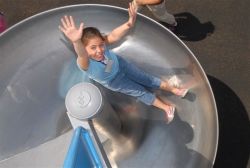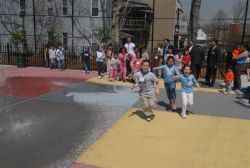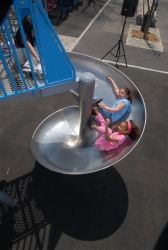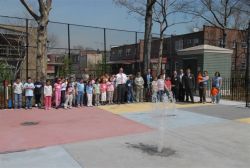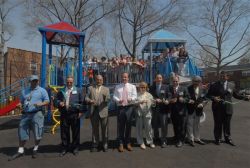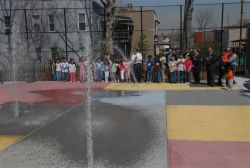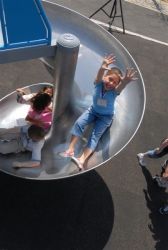Matthews Muliner Playground
Matthews Muliner Playground
This playground is named for two New Yorkers who lived here 200 years ago. David Mathews (d. 1800) served as mayor of New York from 1776 until 1783 during the British occupation of New York and throughout the Revolutionary War. The British forces took control of New York after the defeat of the Revolutionary forces in Brooklyn and Upper Manhattan in 1776 and the British-born Mathews was installed as the Loyalist mayor. Mathews was known as a thief, an embezzler, and a spendthrift.
In 1776, American colonial forces arrested and jailed Mathews for conspiring to kidnap and assassinate General George Washington. He was soon returned to office, though, and the British held New York City as their last official post in the newly formed United States until 1783. Evacuation Day on November 5 of that year, the day British military control ended in New York and in the United States, marked the end of Mathews’ mayoral term as well. After Evacuation Day, Mathews, along with many other British loyalists, fled to British-held Nova Scotia.
Thomas Muliner (1620-1701) (alternate spellings include Mulinex, Molinex, Mallener, and Molenaer) was a 17th century English settler who emigrated to New Netherlands in 1652 and settled with his family in Westchester County in 1658. Dutch rule of this area began in 1621, twelve years after the first Dutch exploration of the Hudson River valley, when the Dutch West India Company received its charter to settle the New Netherlands, the area stretching from the Delaware River to the Connecticut River. Manhattan developed into the nucleus of this settlement effort. Settlers sought their livelihoods in various ways in the region, including farming, trapping, and trading. In order for non-Dutch settlers like Thomas Muliner to settle there, they were required to give an oath of fealty to the Netherlands.
In July 1954, land was cleared between Matthews and Muliner Avenues for a new park. Parks Commissioner Robert Moses determined that the surrounding blocks lacked sufficient parkland and that a playground would be appropriate for this space. A fully equipped park, complete with wading pool, sandpit and public restroom was installed that year. In 1997, Parks restored the handball courts and other play equipment with city funds allocated by the City Council.
Check out your park's Vital Signs
Clean & Safe
Green & Resilient
Empowered & Engaged Users
Share your feedback or learn more about how this park is part of a
Vital Park System

